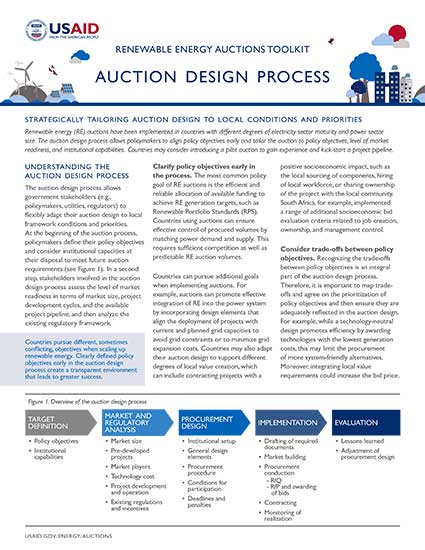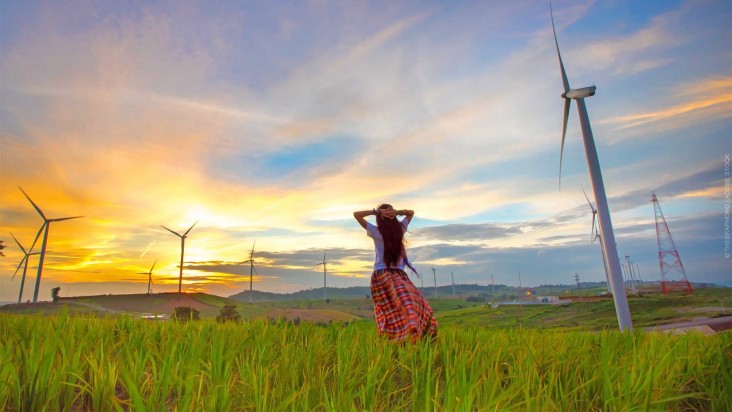- Energy Home
- How We Work
- Programs & Initiatives
- EmPOWERing Women and Girls
- Competitive Energy Procurement
- Auctions Toolkit
- Introduction
- Design
- Renewable Energy Integration
- Training
- Country Experience
- Resources
- Why Auctions?
- Designing RE Auctions
- Stages of Design
- Design Process
- Prequalification & Ceiling Prices
- Financial Guarantees & Penalties
- System-friendly Procurement
- Technology Selection
- Variable RE Forecasting
- Impact on System Operations
- System-friendly Procurement in Bangladesh
- Variable RE in Bangladesh
- Auctions Toolkit
- Toolkits
- Monitoring & Evaluation
- Resources
- Stories
Speeches Shim
The auction design process allows policymakers to align policy objectives early and tailor the auction to policy objectives, level of market readiness, and institutional capabilities.
Policymakers have many objectives for auctions such as promoting private sector investment and socioeconomic progress. Adapting the auction design to local framework conditions and priorities is one of the key steps to ensure success in achieving auction policy objectives. Good auction design can enable policymakers to advance many objectives, including reaching renewable energy targets, lowering generation costs, supporting the integration of renewable energy, and creating local jobs. Good auction design also mitigates risks to all parties and reduces the chance of project construction delays, non-completion, and underperformance during the operation phase.
Auctions can be implemented in countries with different degrees of electricity sector maturity and power sector size. At the beginning of the auction process, a government defines its policy objectives and considers institutional capacities at its disposal to meet future auction requirements. Countries pursue different, sometimes conflicting, objectives when scaling up renewable energy. Clearly defined policy objectives early in the auction design process create a transparent environment that leads to greater success. Next, a government assesses the level of market readiness in terms of market size, project development cycles, and the available project pipeline, and then analyzes the existing regulatory framework. A government may consider introducing a pilot auction to gain experience and kick-start a project pipeline.



Comment
Make a general inquiry or suggest an improvement.